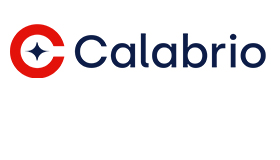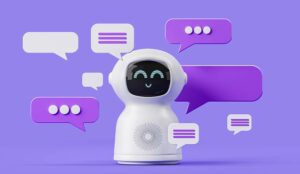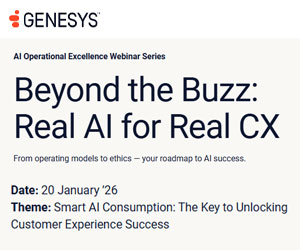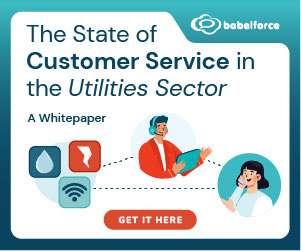Calabrio explores how businesses can overcome common chatbot adoption challenges by leveraging AI-driven analytics, improving bot training, and creating seamless customer experiences.
Chatbots have transformed customer service by providing instant, AI-powered support that reduces contact centre volume and improves operational efficiency.
However, many customers bypass chatbots, opting instead to escalate to live agents at the first opportunity. This leads to low bot adoption rates, high operational costs, and customer frustration-defeating the purpose of self-service automation.
If your chatbot isn’t delivering the results you expected, you’re not alone. Many organizations struggle with poor chatbot adoption and usability issues. The good news? There are proven strategies to turn frustration into chatbot adoption and self-service success.
Why Customers Avoid Bots: Common Chatbot Adoption Challenges
1. Customers Don’t Trust the Bot
One of the biggest challenges in chatbot adoption is customer skepticism. Many users perceive chatbots as frustrating, unable to resolve their issues effectively.
As a result, the moment they recognize they’re interacting with AI, they immediately ask for a live agent – increasing escalation rates and defeating the purpose of self-service.
2. High Escalation Rates Lead to Inefficiency
When chatbots fail to resolve customer issues, live agent escalations increase, leading to higher staffing costs and longer resolution times.
Customers grow frustrated with ineffective self-service options, and businesses struggle with increased contact centre volume.
3. Poor Bot Performance & Maintenance Issues
Chatbots require ongoing training, tuning, and updates to remain effective. Without AI-driven analytics, chatbot teams struggle to track key bot metrics, identify performance gaps, prioritize updates, and ensure that automation is improving over time.
4. Lack of Data & Insights to Improve Performance
Fragmented and incomplete chatbot data makes it difficult to analyse customer interactions and identify areas for improvement.
Without clear insights, businesses fail to fine-tune chatbot performance – resulting in low adoption and missed opportunities.
How to Improve Usability & Drive Chatbot Adoption
1. Implement AI-Driven Chatbot Analytics
Data is the key to chatbot success. Without real-time insights into bot performance, businesses struggle to pinpoint why customers are bypassing chatbots. AI-driven chatbot analytics allow companies to:
- Identify friction points in customer conversations
- Track where users drop off or escalate to live agent
- Measure bot automation success with key metrics (BAS, CSAT, Cost per Automated Chat)
- Optimize bot responses based on customer sentiment
By leveraging chatbot analytics, companies can gain a complete picture of chatbot performance and make data-driven improvements to increase adoption.
2. Improve Self-Service Experiences with Smarter AI Training
A well-trained chatbot can handle more complex inquiries, reducing the need for live agents and improving containment rates. Key strategies include:
- Enhancing chatbot knowledge bases to address gaps
- Refining intent recognition & NLP (Natural Language Processing) for accurate responses
- Personalizing chatbot interactions based on user behaviour & preferences
Chatbots must continuously learn from real customer interactions to stay relevant and effective.
3. Make Escalations Seamless & Context-Aware
Instead of frustrating customers with poor chatbot handoffs, businesses should:
- Enable smart escalations, where live agents receive full conversation history to provide seamless assistance
- Use hybrid AI-human support, where chatbots assist live agents with contextual suggestions
- Reduce unnecessary escalations by enhancing bot decision-making
A chatbot shouldn’t be a dead-end – it should be a seamless part of the customer support ecosystem.
4. Empower Customers with Self-Scheduling & Personalisation
Giving customers control over their interactions makes them more likely to engage with self-service options. Businesses can improve chatbot adoption by:
- Implementing self-scheduling for support, allowing customers to choose the best time to connect
- Offering personalized chatbot interactions based on past interactions
- Using AI to suggest self-service solutions before escalating to an agent
Customers are more likely to trust chatbots when they provide valuable, proactive assistance.
The Business Impact of Optimised Chatbot Utilisation
Companies that prioritise chatbot adoption see:
- Lower contact center volume & reduced operational costs
- Higher containment rates & self-service adoption
- Improved customer satisfaction & brand loyalty
- Increased agent productivity by reducing repetitive inquiries
A well-optimised chatbot doesn’t just reduce support costs – it enhances customer experience, improves efficiency, and increases ROI.
Turn Chatbot Frustration into Success
If your chatbot adoption rates are low, it’s time to re-evaluate your strategy. By leveraging AI-driven chatbot analytics, smarter bot training, and seamless customer experiences, businesses can turn chatbot frustration into a highly effective self-service solution.
This blog post has been re-published by kind permission of Calabrio – View the Original Article
For more information about Calabrio - visit the Calabrio Website
Call Centre Helper is not responsible for the content of these guest blog posts. The opinions expressed in this article are those of the author, and do not necessarily reflect those of Call Centre Helper.
Author: Calabrio
Reviewed by: Jo Robinson
Published On: 12th May 2025 - Last modified: 14th May 2025
Read more about - Guest Blogs, Calabrio






 The digital foundation of a customer-centric contact centre, the Calabrio ONE workforce performance suite helps enrich and understand human interactions, empowering contact centres as a brand guardian. Calabrio ONE unites workforce optimisation (WFO), agent engagement, and business intelligence solutions into a cloud-native, fully integrated suite.
The digital foundation of a customer-centric contact centre, the Calabrio ONE workforce performance suite helps enrich and understand human interactions, empowering contact centres as a brand guardian. Calabrio ONE unites workforce optimisation (WFO), agent engagement, and business intelligence solutions into a cloud-native, fully integrated suite. 





























